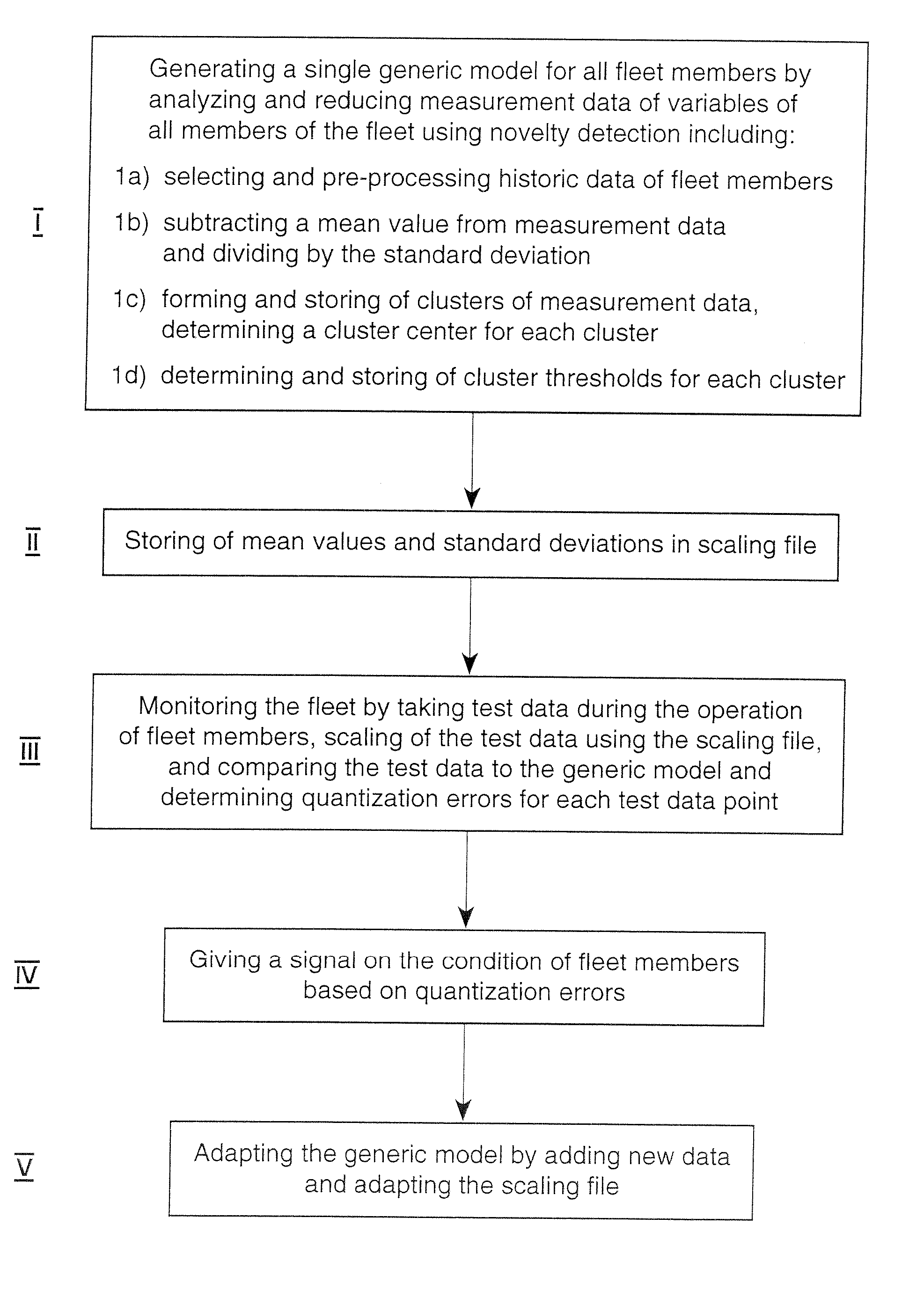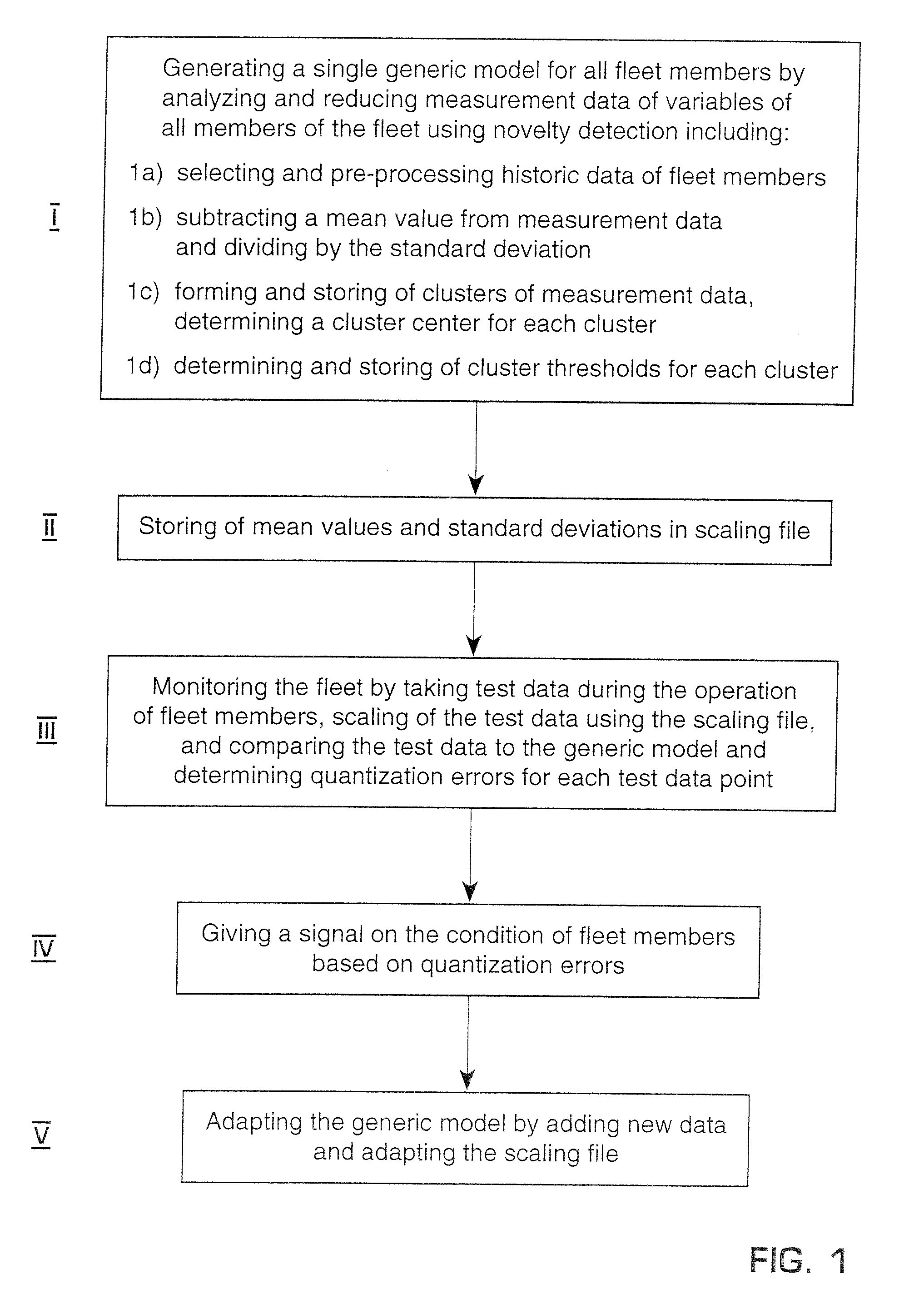Method of condition monitoring
a condition monitoring and condition technology, applied in the direction of testing/monitoring control systems, instruments, nuclear elements, etc., can solve the problems of large effort in terms of engineers' time and computing power, and achieve the effect of naturally compromising fault sensitivity
- Summary
- Abstract
- Description
- Claims
- Application Information
AI Technical Summary
Benefits of technology
Problems solved by technology
Method used
Image
Examples
Embodiment Construction
[0045] An example of the method according to the invention is disclosed herewith in an exemplary application to the monitoring of a fleet of electrical power plants. The flow chart in FIG. 1 shows steps I through V.
[0046] The generation of the generic network (step I), which is herein also referred to as the training of the generic network, is carried out by careful selection of a data set (or training data set) representing the normal operation of the monitored electrical power plant (step Ia). The normal operation refers, for example, to the operation of the power plant at a typical load, at typical atmospheric conditions (e.g., pressure, temperature, humidity), for a typical performance (e.g., power output, efficiency, pollutant levels) that the power plant was designed for. A selected data set includes, for example, data from over 250 variables monitoring the flow of compressed air from the compressor (pressure, temperature), outside temperature and pressure, flow of fuel into ...
PUM
 Login to View More
Login to View More Abstract
Description
Claims
Application Information
 Login to View More
Login to View More - R&D
- Intellectual Property
- Life Sciences
- Materials
- Tech Scout
- Unparalleled Data Quality
- Higher Quality Content
- 60% Fewer Hallucinations
Browse by: Latest US Patents, China's latest patents, Technical Efficacy Thesaurus, Application Domain, Technology Topic, Popular Technical Reports.
© 2025 PatSnap. All rights reserved.Legal|Privacy policy|Modern Slavery Act Transparency Statement|Sitemap|About US| Contact US: help@patsnap.com



